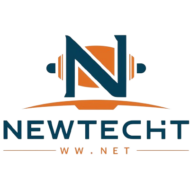Are you familiar with HIAB? No, we’re not talking about a new slang term or the latest trending hashtag. HIAB is actually an acronym for Hydraulic Loading and Unloading System (HIAB), a revolutionary technology that has revolutionized the world of logistics and transportation. Whether you work in construction, freight handling, or any industry that involves HIAB (Loader Crane Licence) heavy lifting, understanding the ins and outs of HIAB is essential.
In this comprehensive guide to loader crane licensing, we will take a closer look at what exactly HIAB entails, explore the different types of loader cranes available on the market today, and delve into the licensing requirements for operating one. So fasten your seatbelts (not literally) because we’re about to embark on an exciting journey through the fascinating world of HIAB! Let’s get started!
What is HIAB and why is it important?
HIAB, also known as Hydraulic Loading and Unloading System, is a game-changer in the realm of logistics and transportation. So, what exactly is HIAB? In simple terms, it’s a specialized crane system that can be attached to trucks or other vehicles for efficient loading and unloading of heavy cargo.
What makes HIAB so important? Well, imagine you’re in the construction industry and you need to lift and position heavy building materials with precision. Or perhaps you work in freight handling where time is of the essence when loading or unloading goods onto trucks. This is where HIAB comes into play – it offers unmatched versatility and efficiency.
One key advantage of using a HIAB loader crane is its ability to reach areas that may otherwise be inaccessible. With its hydraulic extensions and maneuverability, it can navigate tight spaces with ease, minimizing disruptions at job sites or congested urban environments.
Moreover, by utilizing a properly licensed operator who understands the intricacies of operating a HIAB loader crane safely and efficiently ensures increased productivity while reducing the risk of accidents or damages during lifting operations.
HIAB serves as an indispensable tool across various industries by providing an innovative solution for lifting heavy loads efficiently. It enables faster turnaround times, enhances safety measures on worksites through skilled operators’ expertise; ultimately streamlining operations for businesses dealing with heavy-duty tasks!
Types of Loader Cranes
Loader cranes, also known as HIABs, come in various types to suit different lifting and loading tasks. Each type is designed with specific features and capabilities to meet the diverse needs of industries such as construction, logistics, and transportation.
One commonly used type is the knuckle boom crane, which features multiple hinged sections that resemble a knuckle joint. This design allows for increased flexibility and maneuverability when reaching objects from different angles. Knuckle boom cranes are ideal for handling loads in tight spaces or on uneven terrains.
Another popular option is the telescopic boom crane. As its name suggests, this type of crane has a hydraulic mechanism that extends or retracts the arm to reach varying distances. Telescopic boom cranes are often used for long-distance lifting applications where precision and stability are crucial.
For heavy-duty lifting operations, there are stiff-boom cranes that offer superior strength and durability. These cranes have a rigid arm without any articulation points, making them capable of lifting extremely heavy loads with ease.
In addition to these main types, there are also specialty loader cranes available in the market. For instance, container-handling cranes are specifically designed for loading and unloading shipping containers at ports or warehouses.
Each type of loader crane has its own advantages and limitations based on factors such as load capacity, reach capability, mobility requirements, and operational environment. It’s important to choose the right type of loader crane based on your specific application needs to ensure optimal performance and safety during operation.
Licensing Requirements for Operating a HIAB
Obtaining the proper licensing for operating a HIAB loader crane is crucial to ensure safety and compliance with regulations. The requirements may vary depending on your location and the specific type of HIAB you intend to operate.
To begin the licensing process, it is recommended to research and understand the local laws and regulations governing loader crane operation in your area. This will give you a clear picture of what steps need to be taken and what qualifications are necessary.
Next, you will likely need to undergo training from an accredited institution or organization that offers HIAB operator courses. These courses typically cover topics such as equipment inspection, safe operation procedures, load handling techniques, and relevant legislation.
After completing the necessary training, you may be required to pass written exams or practical assessments to demonstrate your knowledge and competency in operating a HIAB loader crane safely. Some jurisdictions may also require medical examinations or background checks as part of the licensing process.
Once you have successfully obtained your license, it is important to stay updated on any changes in regulations or best practices related to HIAB operation. Regular refresher training can help ensure that you maintain your skills and remain knowledgeable about industry standards.
Remember that operating a HIAB loader crane without proper licensing not only puts yourself at risk but also jeopardizes the safety of others around you. By taking the time to obtain the necessary licenses and certifications, you are demonstrating professionalism, responsibility, and commitment towards safe operations.
So if you’re considering diving into this field or already work with loader cranes like HIABs – make sure that obtaining appropriate licensing is at the top of your priority list! Stay informed about local laws/regulations where applicable (they might differ), complete required training/courses/examinations/practical assessments/medical examinations/background checks etc., maintain ongoing education through regular refreshers alongside staying up-to-date on new developments within this sector – all these factors combined contribute greatly towards ensuring both personal & public safety while operating a loader crane like HIAB. Happy and safe lifting!
